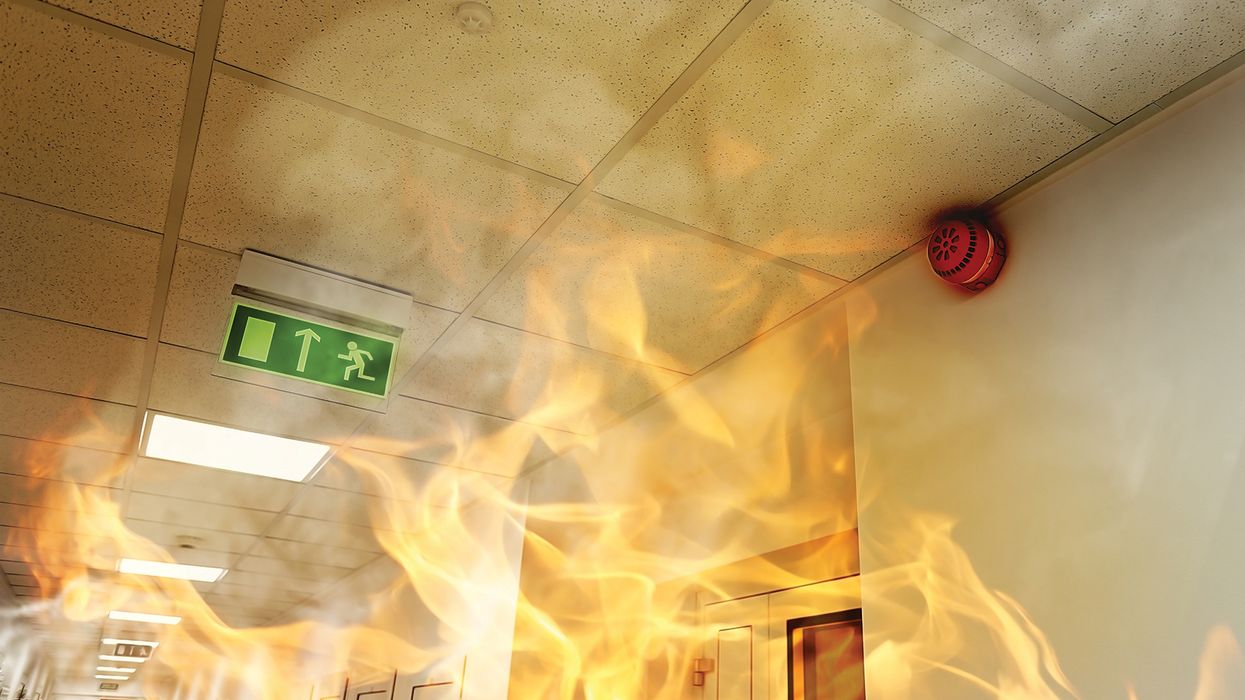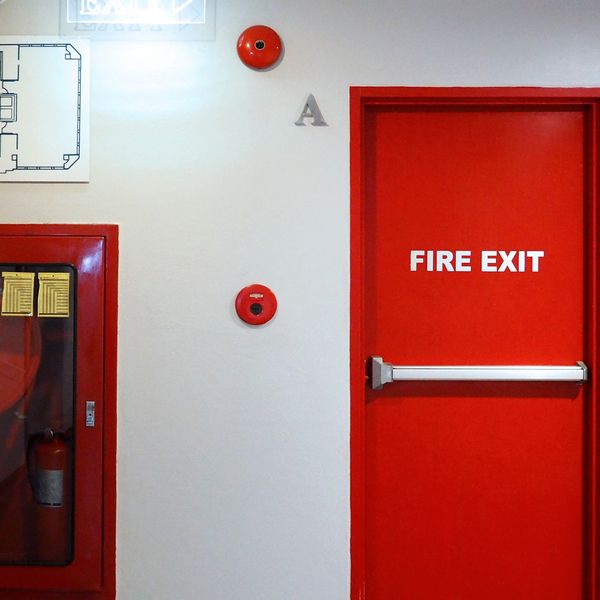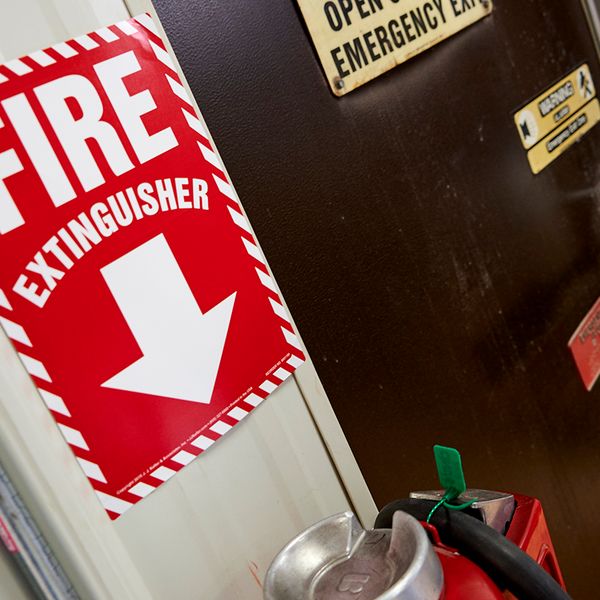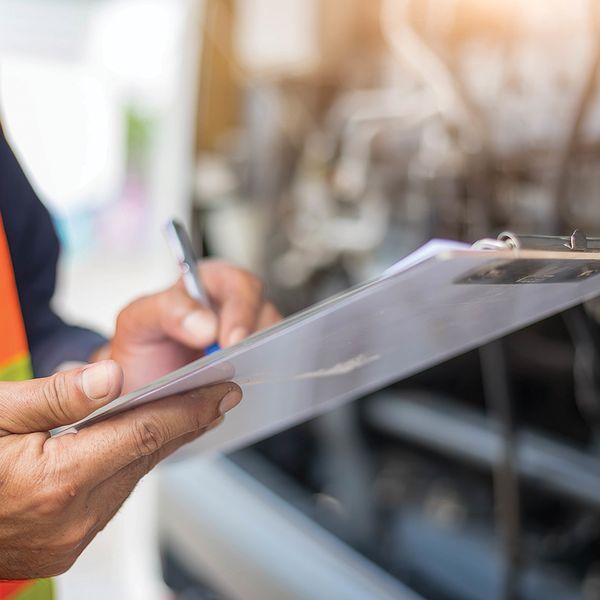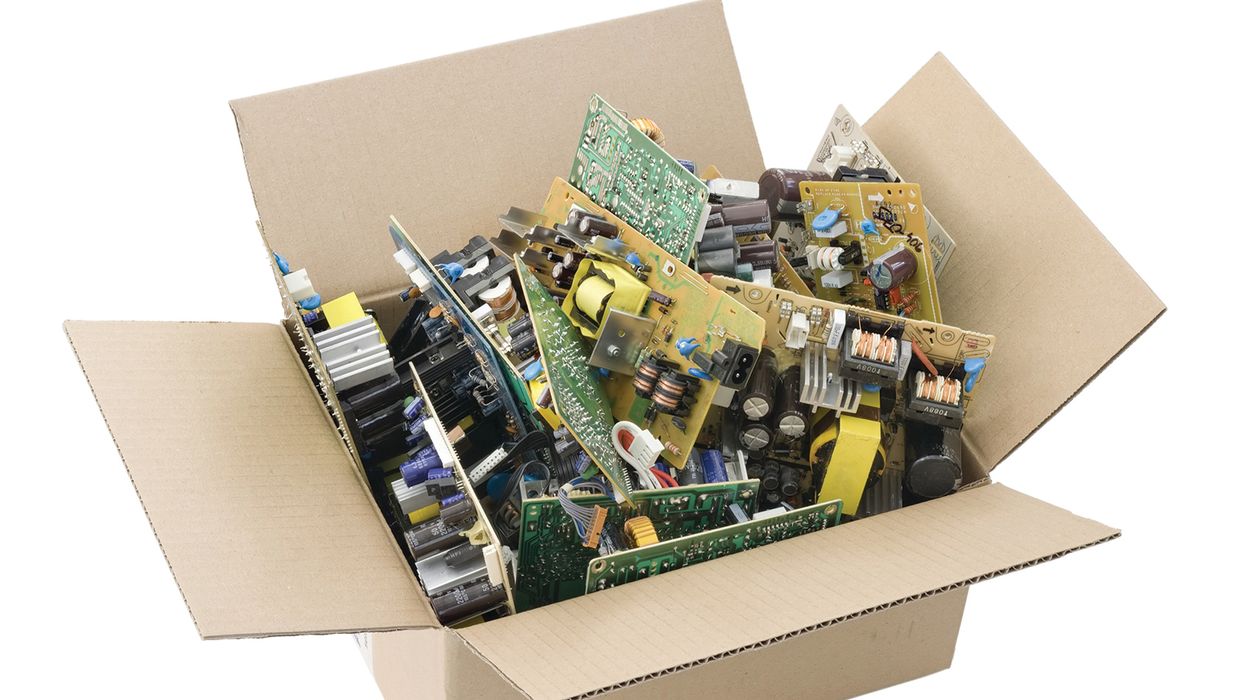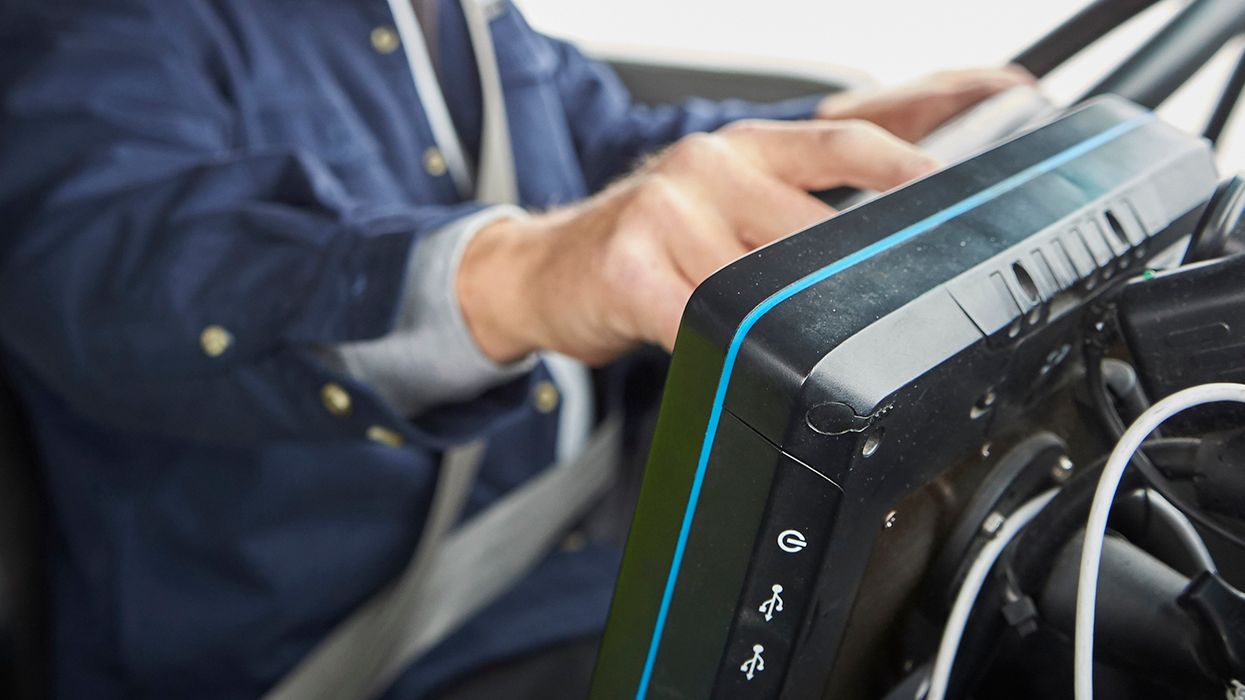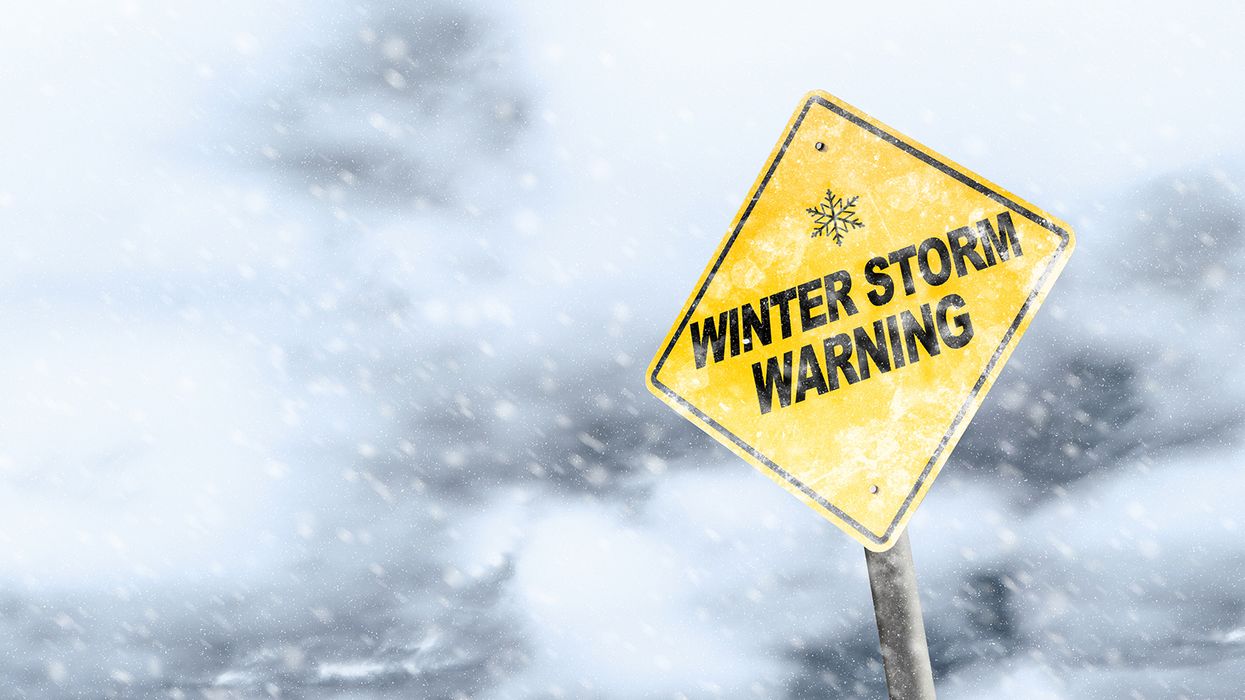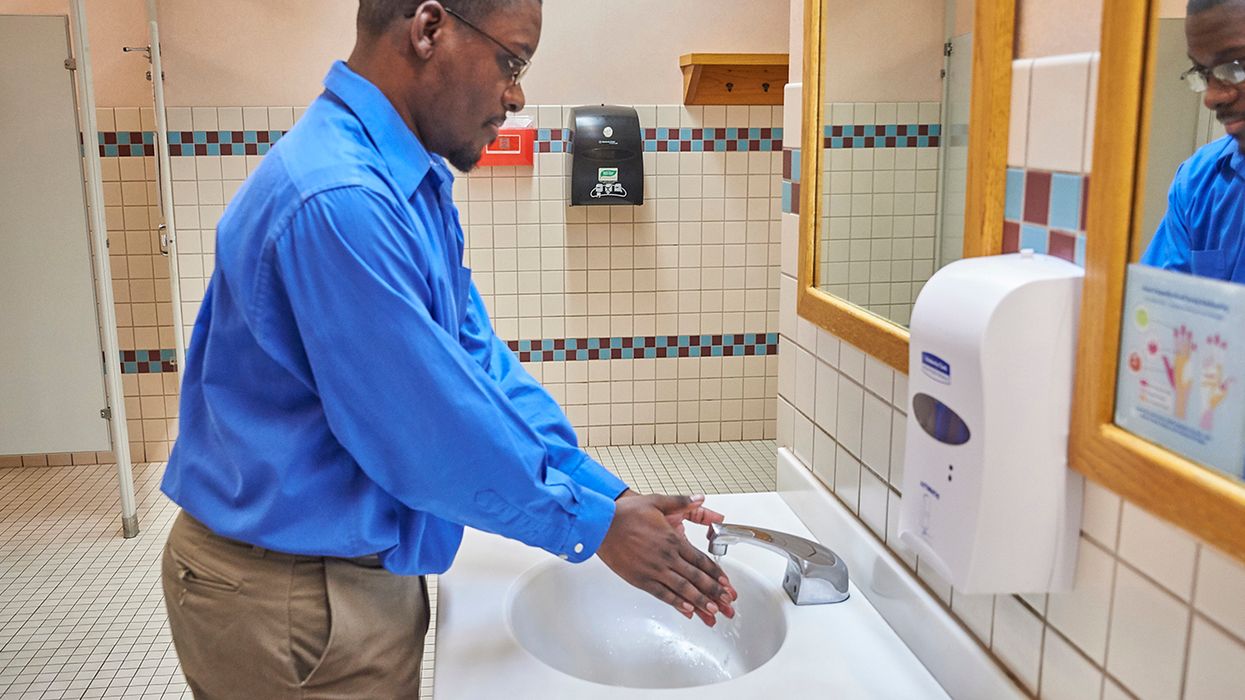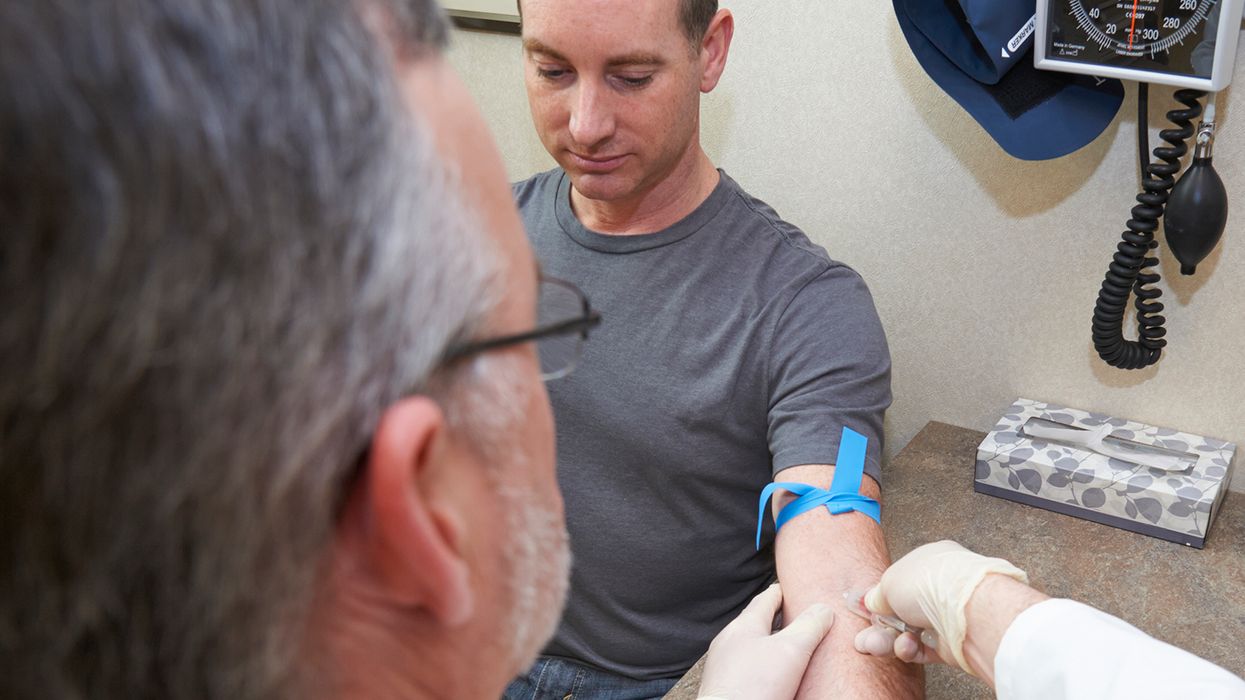Ensure your fire doors close and are sealed properly
Did you know that a fire door gasket is designed to expand under heat, forming a seal around the door to keep smoke from entering the building? Although fire doors can be left open, they must close when a fire is detected so smoke and fire don’t travel into occupied spaces.
Malfunctioning fire doors are not only dangerous to occupants during a fire event, but the local fire marshal or OSHA could also cite your employer, or it can violate the terms and conditions of your company’s commercial liability policy.
Many aging buildings have outdated exit doors that may not keep occupants safe during a fire event. Although such doors may be grandfathered in until they’re replaced, employees’ safety may be at risk or worse, evacuation from occupied spaces may be hindered.
OSHA states that fire doors should:
- Self-close during a fire event,
- Have approved hardware, and
- Not be blocked.
Employees must be able to open exit doors at all times without requiring special knowledge, tools, or keys. Exit discharge doors can have panic bars, but they can only lock from the outside. Consider using glow-in-the-dark arrows in your exit stairwell to direct workers to the exit discharge.
| Need more information to enhance your fire safety program? See our ezExplanation on Fire Safety. |
In early 2023, OSHA issued a national retailer proposed penalties of $98,219.00 for not ensuring emergency exits were open. Doors were kept closed by placing a broom through the door’s handles, and a barrel and bolt style lock was installed on the door 5 feet 11 inches above the floor to keep the door locked.
Fire event
During a recent fire event, a worker was mixing a bonding agent (FX-792LPL). It was being mixed and cured in 5-gallon buckets to be discarded. There was CI-SLV, an epoxy resin blend, on the same pallet. Both the FX-792LPL and CI-SLV were in similar cans and require the same three-can mixing ratio — two part A’s to one part B.
The CI-SLV resin has a safe-pour depth. Generally, the depth of the mixture shouldn’t exceed the surface area. As the resin cures, it creates an exothermic reaction required for the resin to solidify and properly cure. This process generates heat that rises and dissipates. Heat transfer becomes problematic if the mixture is too deep, causing the epoxy resin to get too hot, bubble, and smoke. The fire exit door separating the office and warehouse didn’t close properly, allowing white smoke to enter the occupied office area.
Lessons learned
The manufacturer’s instructions recommend using a “pale” for mixing. They don’t specify container types. But general literature available about mixing resins indicates plastic pales can be used. While they are convenient for clean-up, if resins are being mixed, there could be a fire hazard if too much resin is mixed because of the heat issue noted above. Metal pales are fine too. However, glass and/or foam containers shouldn’t be used to mix the resin.
Per an investigation, excessive smoke, bubbling of the CI-SLV, and heat were found. The employee mixing the mixture stated that he mistakenly grabbed the CI-SLV instead of the FX-792LPL. Employees must verify what is being mixed to avoid creating a fire hazard. Employees should also verify safe-pour depths of the chemicals being mixed and should receive regular fire protection training.
The fire door between the office and warehouse was repaired so it would close properly. The door’s gasket was replaced. Fire doors must close completely against the frame to create an effective seal to contain smoke during a fire event. As the gasket heats up, it expands, making the seal more effective.
Key to remember
Employers must ensure fire doors are properly installed to close completely during a fire event. The door’s gasket won’t create an effective seal if it isn’t closed against its frame. Fire doors can be left open; however, they must self-close during a fire event so smoke and fire won’t travel into occupied areas of the building. Include these things in your fire prevention plan.

